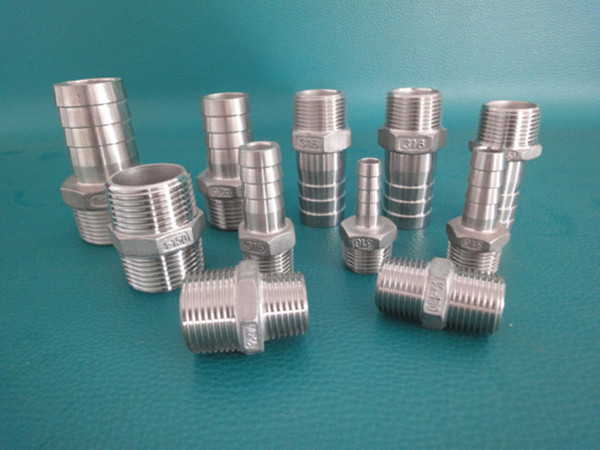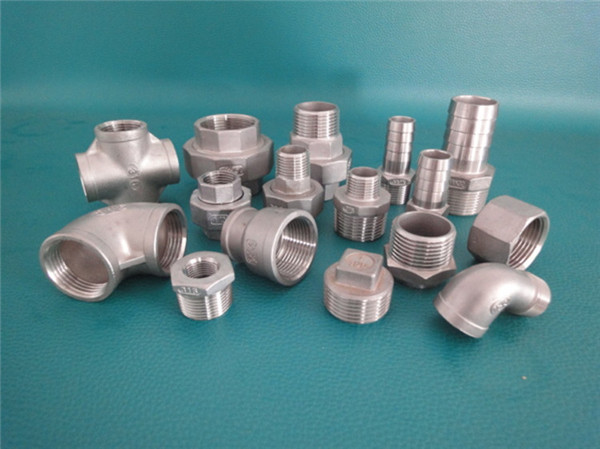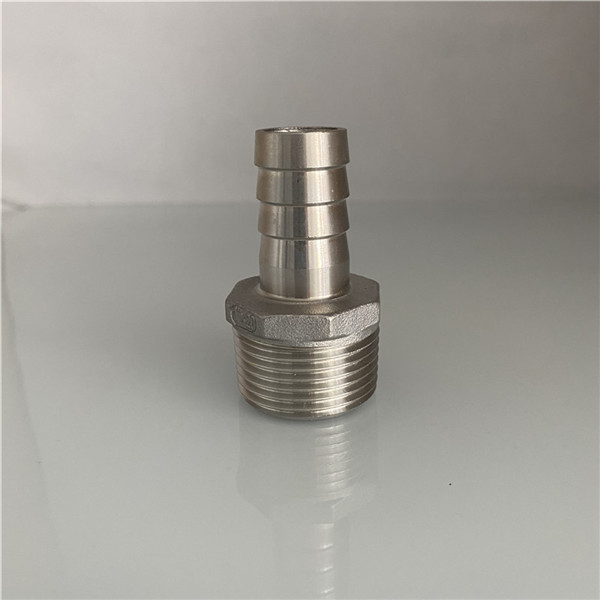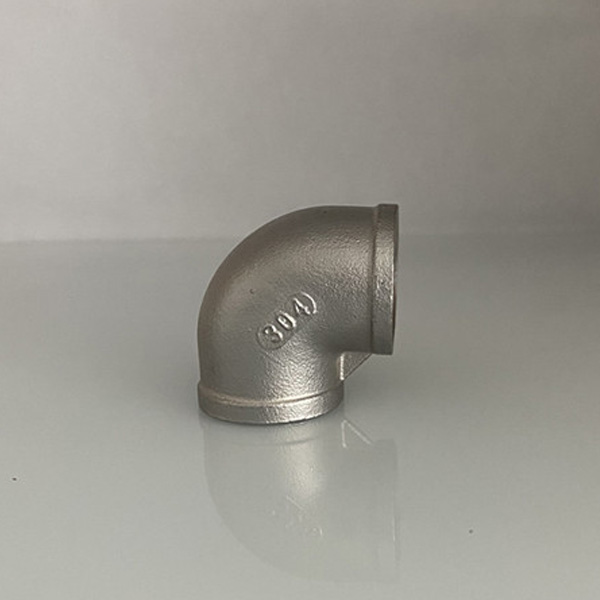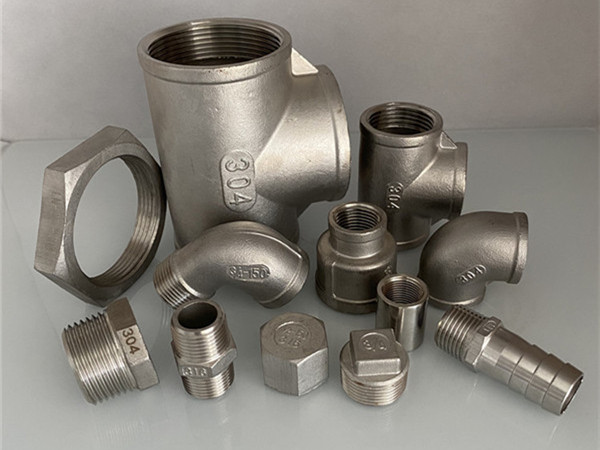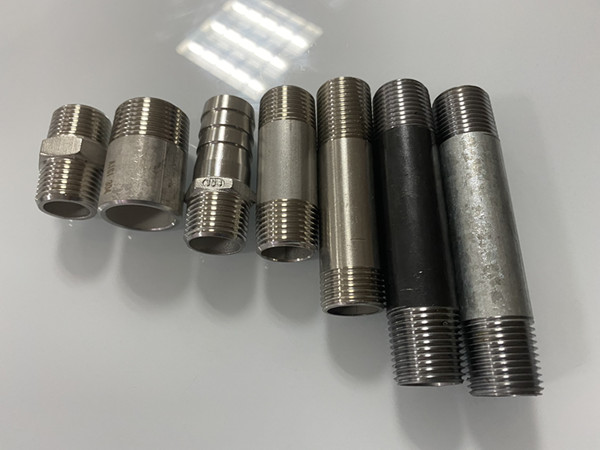A fitting or adapter is used in pipe systems to connect straight sections of pipe or tube, adapt to different sizes or shapes, and for other purposes such as regulating (or measuring) fluid flow. These fittings are used in plumbing to manipulate the conveyance of water, gas, or liquid waste in domestic or commercial environments, within a system of pipes or tubes.
Fittings (especially uncommon types) require money, time, materials, and tools to install, and are an important part of piping and plumbing systems. Valves are technically fittings but are usually discussed separately.
The stainless steel threaded pipe fittings and other plumbing pipe fittings produced by our company are widely used in daily life because of their corrosion resistance. But there are also some installation requirements, as follows:
First, the plumbing fittings cannot be installed in the bedroom or the room directly connected to the bedroom, so it is necessary to beware of gas poisoning.
Second, a pressure relief pipe should be installed at the water outlet of the heating stove. The standard of the used pressure reducing pipe and the connected malleable pipe fittings should not be less than the pipe diameter.
Third, the water inlet and outlet should be connected by malleable steel live connection instead of a malleable steel pipe hoop (280) to facilitate future repairs.
Fourth, due to exhaust considerations, the main pipeline needs to be skewed, and the skew should be 100:1.
Fifth, when using a local heating furnace, the highest point of the pipeline is 6 meters higher than the return water inlet of the heating furnace is the limit, exceeding 6 meters will cause excessive pressure, deformation of the protective body, and risk.
Sixth, the entire heating system should be equipped with an open water filling bucket or expansion tank, and the height of the installation should be more than 25cm from the highest point in the entire heating system.
Seventh, it is absolutely not allowed to install valves on the pipes of the pressure reducing pipe, water supply tank, and exhaust pipe, otherwise, it is very risky.
Eighth, the middle of the water inlet and outlet of the furnace body is lower than the height of the middle of the radiator by more than 30cm, and the higher the middle of the radiator is relative to the water inlet and outlet, the better, which is beneficial to circulation.
Ninth, if the water circulation is not smooth due to non-blocking reasons such as the pipe being too long, the position difference between the radiator and the heating stove can be increased, which will promote the water circulation, if necessary, a small hot water pipe pump can be added to force Let the water circulate. But do not push the water pump device on the horizontal main pipe below to push the water toward the furnace, otherwise, the furnace will be damaged due to the pressure generated by the pump.
Tenth, the height of the chimney of the straight chimney coal stove should be more than two meters, and the chimney with a diameter of 12cm must be used for the bulk coal stove, which should be more than 4 meters. Be short and have as few elbows as possible.
Other important tips for safe use that need to be mentioned:
1. When the flame is turned off for a short time in winter, the water in the system should be drained to prevent icing and blockage of the pipeline. If it is too late to dissolve from the beginning, the water pressure in the water jacket will increase sharply and damage will be caused by simple blasting.
2. The pressure of the pressure gauge cannot be higher than 0.1 MPa (1 kg). If it is higher than this pressure, it is necessary to shut down the boiler. The water temperature of the pressureless small boiler cannot be higher than 95°C.
3. It is forbidden for the heating furnace circulation system to communicate with the outside heating pipes.
4. When the shower is not in use, it is necessary to drain the water in the pipeline at any time to avoid freezing and cracking the pipeline in winter.
Also: other matters needing attention on the honeycomb heating stove:
1. Use high-quality briquette and do not use wet coal to avoid corrosion to stoves.
2. When heating, the coal block should be flush with the furnace, but the fire pressure on the small water jacket, adjust the chimney damper, and open the ash drawer.
3. When cooking rice, remove the pressure fire cover and adjust the chimney damper, or add a piece of coal to a lot of it, so that the rice cooks faster, and then shake it back to the original position when heating.
4. When replacing the honeycomb, if it cannot be clamped, you can press a piece of new coal first, then cover the fire cover, swing the handle back and forth, and the spent coal will fall into the ash drawer until the new coal is flush with the furnace.
5. When sealing the fire, you can put one or two pieces of new coal at a time, then put the fire sealing cover, pressure fire cover, and stove ring, adjust the chimney damper, and close the ash drawer. The user should explore the situation for about a week. can.
6. After the heating stove has been burning for a period of time, the dust in the smoke neck, as well as the dust on the heat absorption sheet and the small water jacket, should be cleaned up in time. If it is not cleaned up in time, it can seriously affect the heating function and the smoke exhaust function.
Hebei Sanvo specializes in the production of export standard pipe nipples, pipe couplings, stainless steel threaded pipe fittings, and other plumbing fittings, China factory direct supply, price concessions. If you are interested in plumbing pipe fittings, please do not hesitate to contact us by email at info@pipenipples.com or click here for other contact information.
